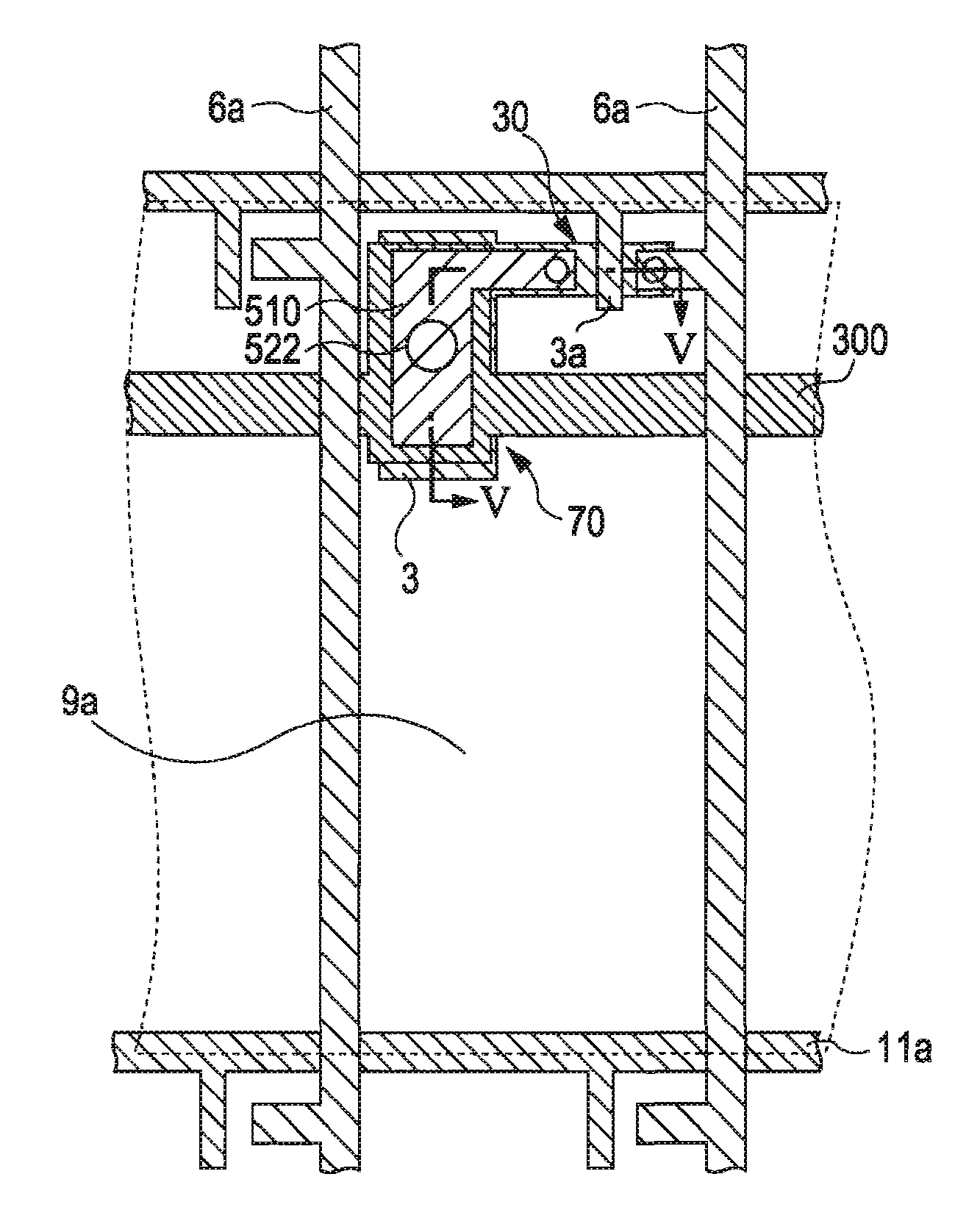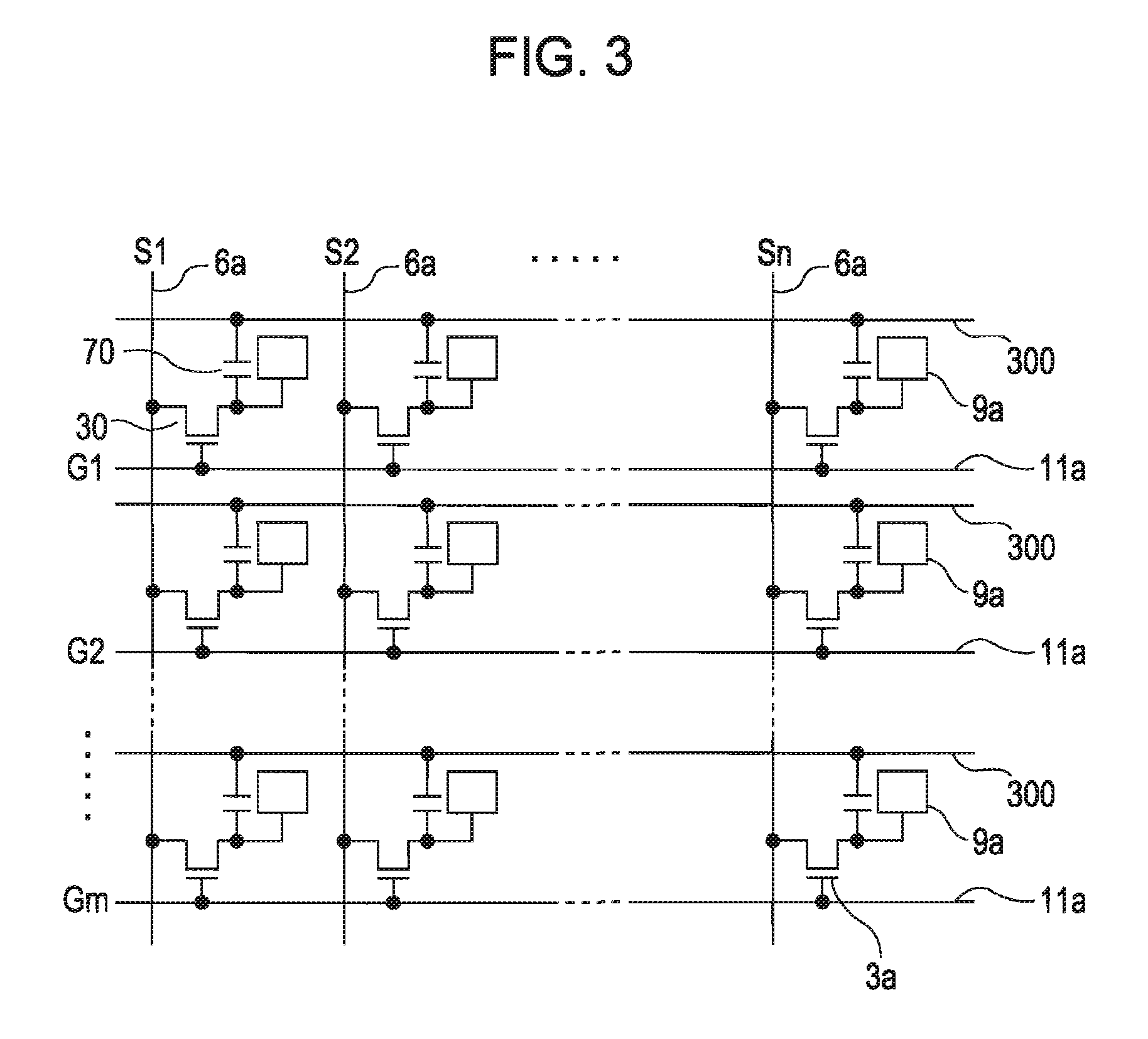Electrooptic device, substrate therefor, method for making the electrooptic device, and electronic apparatus
a technology of electrooptic devices and substrates, applied in the direction of semiconductor devices, optics, instruments, etc., can solve the problems of degrading contact properties, non-uniform resistance, and increasing the cost of electrooptic device production, so as to improve the contact properties of electrical connections, prevent separation and cracking, and high-quality image display
- Summary
- Abstract
- Description
- Claims
- Application Information
AI Technical Summary
Benefits of technology
Problems solved by technology
Method used
Image
Examples
first embodiment
[0076] A first embodiment of the present invention will now be described with reference to FIGS. 1 to 11. In this embodiment, the invention is applied to an active matrix transmissive liquid crystal device.
1.1 Overall Structure of Liquid Crystal Device
[0077] First, the overall structure of the liquid crystal device of this embodiment will be described with reference to FIGS. 1 to 3. FIG. 1 is a plan view of a liquid crystal device viewed from the counter substrate-side. FIG. 2 is a cross-sectional view taken along line II-II in FIG. 1.
[0078] As shown in FIG. 2, in this liquid crystal device, a TFT array substrate 10, which is an example of the substrate according to the present invention, and a counter substrate 20 are arranged opposite each other and a liquid crystal layer 50 is sealed between the TFT array substrate 10 and the counter substrate 20.
[0079] The TFT array substrate 10 and the counter substrate 20 are bonded to each other with a sealing member 52 disposed in a sea...
second embodiment
2. Second Embodiment
[0128] A second embodiment of the electrooptic device will now be described with reference to FIGS. 12 and 13. The second embodiment differs from the first embodiment in that it has a reflector film. Thus, only the differences from the first embodiment are described with reference to FIGS. 12 and 13. For alike components, some may be described with reference to FIGS. 1 to 7B while descriptions for others are omitted to avoid redundancy. In the description below, the electrooptic device is applied to a reflective liquid crystal device.
[0129]FIG. 12 is a cross-sectional view equivalent to the cross-sectional view of FIG. 5, showing an arbitrarily selected pixel unit.
[0130] Referring to FIG. 12, a reflector film 85 composed of silver or an aluminum (Al)-containing material is formed on the organic resin film 80 and outside the small hole 520. When each pixel unit is viewed in a plan view from above the TFT array substrate 10, the reflector film 85 of each pixel un...
third embodiment
3. Third Embodiment
[0140] A third embodiment of the electrooptic device will now be described with reference to FIGS. 14 to 17. The electrooptic device of the third embodiment is an organic EL device of an active matrix type. In the description below, the structures common to the first and second embodiments are referred to as the same reference numerals in FIGS. 1 to 13B and described with reference to these drawings. However, some descriptions are omitted to avoid redundancy.
3.1 Overall Structure of Organic EL Device
[0141] The overall structure of the organic EL device will first be described with reference to FIG. 14. FIG. 14 is a block diagram showing the overall structure of the organic EL, device of the third embodiment.
[0142] In the image display region 110 of the organic EL device, the data lines 114 and the scan lines 112 running across each other are provided. Pixel units 700 correspond to the intersections of these lines and are arranged in a matrix. In the image disp...
PUM
| Property | Measurement | Unit |
|---|---|---|
| contact resistance | aaaaa | aaaaa |
| contact resistance | aaaaa | aaaaa |
| conductive | aaaaa | aaaaa |
Abstract
Description
Claims
Application Information
 Login to View More
Login to View More - R&D
- Intellectual Property
- Life Sciences
- Materials
- Tech Scout
- Unparalleled Data Quality
- Higher Quality Content
- 60% Fewer Hallucinations
Browse by: Latest US Patents, China's latest patents, Technical Efficacy Thesaurus, Application Domain, Technology Topic, Popular Technical Reports.
© 2025 PatSnap. All rights reserved.Legal|Privacy policy|Modern Slavery Act Transparency Statement|Sitemap|About US| Contact US: help@patsnap.com



